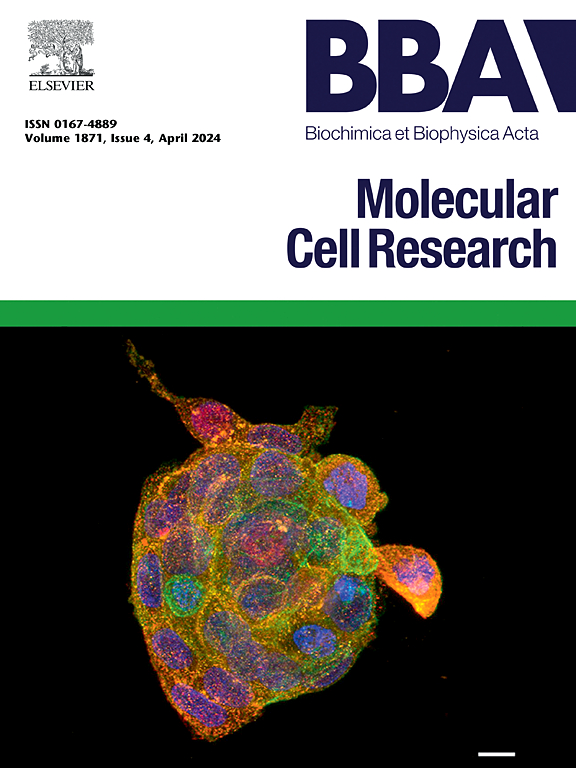Comprehensive analysis of androgen receptor splice variant target gene expression in prostate cancer
IF 3.7
2区 生物学
Q1 BIOCHEMISTRY & MOLECULAR BIOLOGY
Biochimica et biophysica acta. Molecular cell research
Pub Date : 2025-09-30
DOI:10.1016/j.bbamcr.2025.120062
引用次数: 0
Abstract
This study aimed to comprehensively analyze AR-V specific target gene expression using a physiological system that simulates the actual situation of AR-FL and AR-V co-appearance in prostate cancer patients. Clinically described AR splice variants AR-V3, AR-V7 and AR-V9 were transfected along with AR-FL in AR-negative prostate cancer PC-3 cells. RNA sequencing analysis showed only slight differences in differentially expressed genes between AR-FL and AR-V co-expressing cells compared to solely AR-FL expressing cells. Immunofluorescence analysis and luciferase assays revealed hormonal dependency of AR-FL, constitutive activity of AR-V7, and ambivalent activity of AR-V9, while AR-V3 showed no activity. Analysis of a set of published target genes showed steady upregulation of EDN2 and FKBP5. Yet, clinical analysis revealed no significant differences in overall survival data in prostate cancer patients. The study challenges the existence of an AR-V specific transcriptome responsible for treatment resistance and tumor progression and highlights the need for further investigation into the molecular mechanism by which AR-V proteins route resistance to ARTA treatment.
前列腺癌中雄激素受体剪接变异靶基因表达的综合分析。
本研究旨在通过模拟前列腺癌患者AR-FL与AR-V共现实际情况的生理系统,全面分析AR-V特异性靶基因表达。临床描述的AR剪接变体AR- v3, AR- v7和AR- v9与AR- fl一起转染AR阴性前列腺癌PC-3细胞。RNA测序分析显示,与单独表达AR-FL的细胞相比,AR-FL和AR-V共表达细胞之间的差异表达基因仅略有差异。免疫荧光分析和荧光素酶测定显示AR-FL的激素依赖性、AR-V7的组成活性和AR-V9的矛盾价活性,而AR-V3没有活性。对一组已发表的靶基因的分析显示,EDN2和FKBP5稳定上调。然而,临床分析显示前列腺癌患者的总体生存数据没有显著差异。该研究挑战了AR-V特异性转录组的存在,该转录组负责治疗耐药性和肿瘤进展,并强调需要进一步研究AR-V蛋白对ARTA治疗产生耐药性的分子机制。
本文章由计算机程序翻译,如有差异,请以英文原文为准。
求助全文
约1分钟内获得全文
求助全文
来源期刊
CiteScore
10.00
自引率
2.00%
发文量
151
审稿时长
44 days
期刊介绍:
BBA Molecular Cell Research focuses on understanding the mechanisms of cellular processes at the molecular level. These include aspects of cellular signaling, signal transduction, cell cycle, apoptosis, intracellular trafficking, secretory and endocytic pathways, biogenesis of cell organelles, cytoskeletal structures, cellular interactions, cell/tissue differentiation and cellular enzymology. Also included are studies at the interface between Cell Biology and Biophysics which apply for example novel imaging methods for characterizing cellular processes.

 求助内容:
求助内容: 应助结果提醒方式:
应助结果提醒方式:


